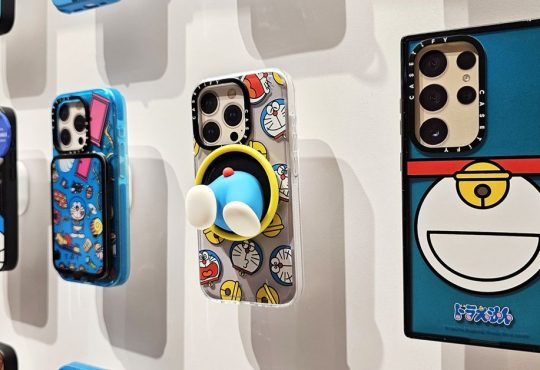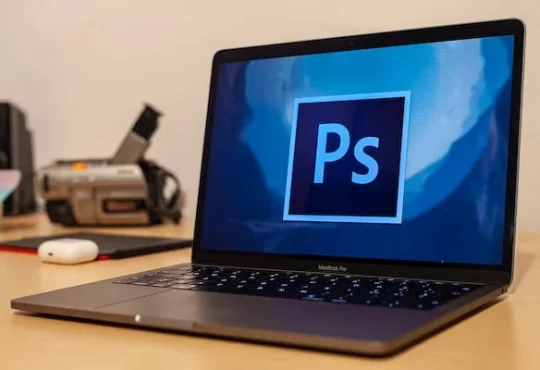 In the fast-moving world of tech, Apple continues to define what innovation looks like. From everyday convenience to high-level creative power, their ecosystem of devices shapes how we live, work, and play. This 2025 guide explores the 12 most impactful Apple devices, featuring fresh details, new releases, and what makes each one worth owning. Whether you’re a casual user, creative professional, or upgrade-seeker, this guide helps you find the perfect Apple companion. Let’s dive in!
In the fast-moving world of tech, Apple continues to define what innovation looks like. From everyday convenience to high-level creative power, their ecosystem of devices shapes how we live, work, and play. This 2025 guide explores the 12 most impactful Apple devices, featuring fresh details, new releases, and what makes each one worth owning. Whether you’re a casual user, creative professional, or upgrade-seeker, this guide helps you find the perfect Apple companion. Let’s dive in!
1. What Is an Apple Device?
An Apple device is any physical gadget designed by Apple Inc.—from iPhones and iPads to Macs, Apple Watches, and more. Known for their sleek design, meticulous user experience, and tight hardware–software integration, these devices consistently outperform similarly specced alternatives. Apple didn’t invent the smartphone or tablet, but they’ve perfected them—making their devices user-friendly, stylish, and reliable, supported by a vast ecosystem of services and seamless cross-device sync.
2. iPhone 16 Series: Today’s Flagship Picks
iPhone 16 & 16 Plus
Introduced in September 2024, the iPhone 16 (6.1″) and 16 Plus (6.7″) mark a fresh chapter. Built on Apple Intelligence and powered by the A18 chip, they feature:
-
Action Button (replacing the mute switch) for customizable tasks
-
New Camera Control button for dedicated photo/video capture
-
48 MP Fusion camera with 2× telephoto and macro ultra-wide lenses
-
On-device AI via Apple Intelligence with visual-object/text recognition
-
USB‑C port, support for MagSafe Qi2.2, and Wi‑Fi 7
-
Battery life: up to 22 hrs video playback (16), 27 hrs (16 Plus)
These upgrades make the iPhone 16 series not only powerful but context-aware—supporting real-time intelligence for a smarter experience.
iPhone 16 Pro & Pro Max
Stepping up to the Pro models means premium materials and performance:
-
Grade‑5 titanium chassis—stronger and lighter
-
All the Action & Camera Control buttons of base models
-
Cutting-edge camera systems, brighter displays, and longer battery lives
-
Users report smooth operation, excellent thermal control, and strong battery health after months of use
The iPhone 16 Pro line delivers a refined, durable, and richly capable flagship experience.
What’s Next: iPhone 17 & iPhone 17 Air
Falling in 2025, the iPhone 17 lineup (including a new “Air” model) is expected to bring:
-
A slender 6.5″ iPhone 17 Air (≈5.5–6 mm thick)
-
Metalens components to streamline Face ID and Dynamic Island
-
Faster MagSafe (45W Qi2.2) and possible enhancements across hardware and software
3. iPad Family: From Casual to Creative
iPad Pro 12.9″ (M2/M3)
Built for creators and professionals, the 12.9″ iPad Pro packs desktop-level performance with Liquid Retina XDR and Apple Silicon.
iPad Air (M3, 2025)
A top pick this year, the Air brings M3 chip lightning speed—up to 40 % faster graphics, support for Apple Intelligence, Magic Keyboard, and Apple Pencil Pro—for a starting price of $599 (11″); $799 (13″).
iPad mini & Base iPad
The Mini offers portability with punch, while the standard iPad holds strong as a reliable, budget-friendly daily tool.
4. Mac Computers: Apple Silicon Domination
MacBook Air (M4, 2025)
The M4-powered Air brings 10-core CPU, 10-core GPU, 18-hour battery life, 12MP webcam, and support for two external monitors—all in a fanless, ultra-light chassis starting at $999.
MacBook Pro (14″ & 16″)
Equipped now with M3 Pro/Max (and rumored M4), these models are for professionals needing top performance—featuring mini-LED screens and generous connectivity.
Mac Studio, Mac Pro, iMac, Mac mini
From desktops to all-in-ones, Apple’s M-series lineup covers all needs—creative, casual, workspace, or studio.
5. Apple Watch Series: Health Leaders
Series 10: Built for Water, Fitness & Wellness
Released in late 2024, the Series 10 brought targeted upgrades for active lifestyles:
-
Depth gauge and water‑temperature sensor – perfect for pool or ocean workouts, with readings down to 6 m beneath the surface via watchOS 11’s integrated Depth and Tides apps.
-
Maintains vital health tracking: ECG, SpO₂ sensing (though temporarily disabled in the U.S. due to patent issues), heart-rate monitoring, advanced sleep detection via TR‑SOS.
Despite hardware redesigns, blood-pressure monitoring didn’t arrive on Series 10 as Apple experienced design delays and calibration challenges.
Ultra 3 (Arriving Fall 2025): Adventure-Ready & Trackable
Set to debut alongside the new iPhones in September 2025, the rugged Ultra 3 packs significant health and connectivity enhancements:
-
Hypertension detection alerts – using optics and sensors to flag elevated blood pressure trends (not exact readings), potentially lifesaving.
-
5G RedCap connectivity – a power-efficient version of 5G that enables faster data and future-proofing.
-
Satellite messaging – Globalstar-powered texting capability when off-grid, even without carrying an iPhone.
-
Brighter LTPO3 OLED display, matching Series 10’s visual enhancements.
-
S10 chip – a more compact and efficient processor with improved performance and battery life.
Why it matters: The Ultra 3 turns Apple’s most rugged watch into an outdoor-ready health and safety essential—useful from trail to sea.
Series 11 & watchOS 12 (Fall 2025): Smarter, Subtle & Personalized
Anticipated to launch alongside iPhone 17 and Ultra 3, the Series 11 builds upon the platform foundation laid by Series 10:
-
Equipped with MediaTek 5G RedCap modem for improved connectivity and battery efficiency
-
Launching with S11 chip, which offers better performance and power management
-
Blood-pressure alerts supported across both Pro and Ultra models—thanks to Apple’s long testing journey
-
Fitness & wellness AI: watchOS 12 introduces personalized coaching powered by Apple Intelligence, possibly influenced by Vision Pro UI design
-
Expandable color options, refined strap attachment, and new customization with minimal design changes
6. AirPods Pro 2: Immersive Audio Experience
Apple’s AirPods Pro 2 continues to dominate the wireless-earbud market, celebrated for its seamless iOS integration and clear voice quality. As of Spring 2025, a new firmware update (version 7E93) enhances performance, including Voice Isolation during calls, improved gaming latency, and optimized personalized volume adjustments.
Rumors ahead of WWDC 2025 hint at next-gen features like stem-tap camera control (snap a photo hands-free), sleep-detection auto power-off, expanded head-gesture controls (e.g., nod to answer calls), and a “studio-quality” mic mode for crisp audio. While hardware updates won’t arrive until 2026, these software improvements make current AirPods Pro 2 feel cutting-edge—especially with deals dropping them to around $170 recently.
Why it matters:
-
👂 Noise-cancelling excellence with enhanced microphone support
-
📸 Innovative use controls—snap photos or answer calls with gestures
-
🔊 Top-tier audio for gaming, music, and calls—firmware keeps them sharp into 2025
7. Apple TV 4K: The Smart Hub
The Apple TV 4K remains one of Apple’s most underrated devices—delivering smooth performance, vibrant visuals, and access to Apple Arcade and Fitness+—making it more than just a streaming box. With its A15 Bionic chip, support for Thread network, Gigabit Ethernet, and a rechargeable Siri Remote with USB-C, it’s a feature-rich centerpiece for modern living rooms.
Looking ahead, tvOS 26 (due at WWDC 2025) brings a unified “glassy” design consistent with visionOS and iOS 26, introduces a new cross-platform Games app, captive Wi-Fi network sync, and likely AI-enhanced Siri voice control. New hardware planned for late 2025 is expected to offer:
-
A17 Pro or A18 chip – unlocking next-gen gaming and Apple Intelligence features
-
In-house Wi-Fi 6E / Bluetooth combo chip – increased speed, reduced latency
-
Built-in camera – enabling FaceTime calls and gesture interfaces on the big screen
Why it matters:
-
📺 Smooth UI and faster performance from system updates
-
🎮 Games app + stronger silicon makes it a casual gaming hub
-
🏡 Smart home central—controls HomeKit, syncs Wi-Fi across devices
-
🤳 Future-proof—FaceTime and AI features rounding out a next-gen experience
8. AirTag: Smart Tracking Made Simple
AirTags remain the go-to solution for locating lost items. They rely on secure Bluetooth signals sent through Apple’s vast Find My network and maintain excellent battery life with privacy at the core.
New to Spring 2025 is the “Share Item Location” feature in iOS 18.2. It allows you to share your AirTag’s real-time location with friends, family, airlines, or other trusted sources—a big help when traveling with bags or equipment.
Rumors also suggest a next-gen AirTag 2 releasing around June 2025 with major improvements:
-
Second-generation UWB chip—extends range up to ~200 ft (60 m), matching iPhone 15/16 and Watch Ultra 2 Accuracy
-
Tamper-resistant speaker—built to deter misuse or stalking
-
Deeper Vision Pro integration—facilitates spatial tracking in mixed reality
Why it matters:
-
🔗 Secure sharing of item location—ideal for transit or borrowing
-
🎯 Better precision—find belongings clearly and farther out
-
🛡️ Improved safety—speaker design discourages unwanted tampering
-
🛸 Spatial tracking prep—bandwidth with the Vision ecosystem
9. Apple Vision Pro: Spatial Computing Pioneer
A New Era of Computing
Launched in February 2024, the Apple Vision Pro introduced the world to spatial computing—a seamless blend of virtual and real environments controlled by eye tracking, hand gestures, and voice. With over 23 million micro‑OLED pixels, six microphones, twelve cameras, and immersive spatial audio, it delivers unparalleled visual and auditory precision. Its Optic ID provides secure authentication, and passthrough vision lets you see and interact with your surroundings without removing the headset—no wonder reviewers called it “revolutionary” while noting its hefty form.
Real-World Impressions
Early adopters rave about the immersive experiences:
-
Virtual travel & exploration: Users report goosebumps from experiences like high-lining in Norway or swimming alongside sharks—so immersive that you flinch, even when safe at home.
-
Media consumption: Cinema mode transforms your living room into a private IMAX-style theater—so engrossing that other distractions vanish.
-
Spatial memories: Viewing 3D photos and videos—whether travel moments or a seal colony—offers a rich “you’re there” feeling on another level.
-
“Persona” feature: The headset creates a near-realistic digital overlay of your face during calls, preserving eye contact and making video chats more personal.
Limitations & Room for Growth
Despite its cutting-edge tech, Vision Pro isn’t without drawbacks:
-
Weight: At ~650g, extended wear causes discomfort after about an hour. Users suggest a lighter redesign (e.g., titanium build) for future models.
-
Battery life: Roughly 2–2.5 hours of continuous use before requiring external pack replacement, which disrupts immersive sessions.
-
App ecosystem: Though functional, the app library is limited—around 1,770 apps, mostly ported from other platforms. Users hope for more native visionOS content.
-
Price barrier: Starting at $3,499, it remains out of reach for many. Analysts argue a future $1,500–$2,000 Vision Pro 2 would greatly expand its appeal
Style That Snaps (On Your Phone): Discover Casetify Now
Your phone case is part of your outfit. Sustainable. Drop-proof. Insta-ready. Casetify is the phone case you didn’t know you needed—until now. For the latest items and exclusive discounts, visit Casetify.com today and discover a huge collection of brand-tone, trendy, tech-savvy, eco-conscious, and youth-driven cases that suit your needs.
10. Vision Pro 2 (Coming Soon)
At WWDC 2025 (June 9–13), Apple teased visionOS 26, hinting at user interface updates inspired by UI tweaks in iOS/iPadOS/macOS/watchOS. While no hardware announcement is confirmed, developer previews suggest a strong focus on new spatial apps.
User feedback has driven speculation that Vision Pro 2 may debut later this year, featuring:
-
Lighter frame (possibly titanium) for better wearability
-
Longer-lasting battery, to facilitate full-movie or work sessions
-
Improved app support, including richer productivity and entertainment options
-
Lower price—targeting the $1,500–$2,000 bracket to appeal to a broader audience
11. Emerging Ecosystem: AI, AR & Apple Intelligence
iOS 26 & Apple Intelligence
Launching June 9, 2025, iOS 26 will revamp iPhone UI and unlock deeper AI—instant translations, Markdown support in Notes, smarter Siri, and tight integration with Apple Music. All running on-device for privacy and responsiveness.
AI & AR Expansion
Beyond phones and tablets, Apple explores wearables (e.g., smart glasses), wellness tech, and car integration—making devices feel more like helpful assistants than mere gadgets.
12. Summary Table
| Device | Why It Matters in 2025 |
|---|---|
| iPhone 16 / 16 Plus | Action & Camera Control buttons, A18 chip, Apple Intelligence, USB-C, MagSafe Qi2.2 |
| iPhone 16 Pro / Pro Max | Titanium design, top-tier cameras, refined durability, top battery performance |
| iPhone 17 / 17 Air | Upcoming upgrades (metalens, ultra-slim design, improved wireless charging) |
| iPad Air (M3) | Portable powerhouse with AI features; best price/performance |
| iPad Pro 12.9″ | Best-in-class creative workhorse |
| iPad mini & Base | Compact and budget-friendly |
| MacBook Air (M4) | Ultra-light, long-lasting, versatile |
| MacBook Pro (14″/16″) | Professional-grade performance and screen |
| Mac Studio / Mac Pro | Desktop beasts for demanding users |
| Apple Watch Series 10/Ultra 3 | Health metrics, rugged, evolving sensors |
| AirPods Pro 2 | High-quality audio, spatial sound |
| Apple TV 4K | Smart home and entertainment center |
| AirTag | Essential lost-item tracker |
| Vision Pro / Vision Pro 2 | Headset innovation, immersive spatial computing |
Why These Apple Devices Still Matter
Apple maintains a lead by distributing cutting-edge hardware, integrating it via proprietary software (visionOS, iPadOS, macOS, watchOS, tvOS), and backing it with services like Apple Intelligence, iCloud, and Fitness+. Their move to M-series silicon delivers unmatched performance and energy efficiency, while cross-device synergy—i.e., unlocking cars with Apple Watch or spatial tasks via Vision Pro—enhances daily life.
Conclusion
Whether it’s the iPhone 16 Pro Max in your hand, iPad Air in your bag, MacBook Air on your lap, or Apple Watch on your wrist—2025’s Apple lineup empowers you to achieve more with style. Their ecosystem isn’t just about owning devices—it’s about enjoying an interconnected lifestyle bolstered by AI, health, and productivity.
So choose the devices that fit your world. Apple’s ecosystem will stay connected, smart, and ready to explore everything that lies ahead.






